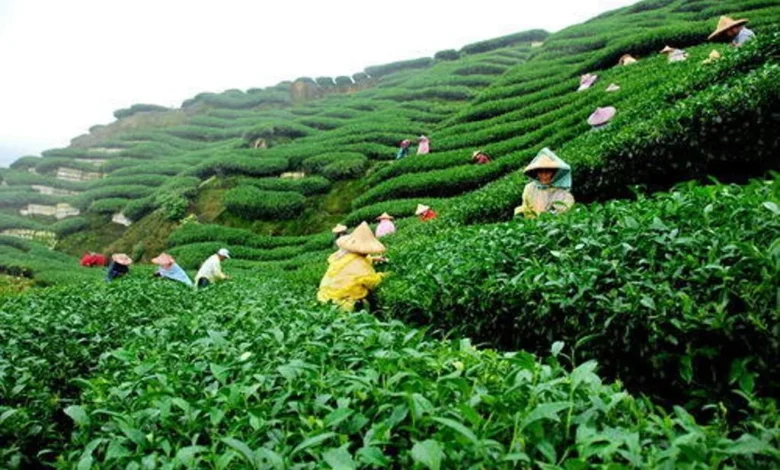5 Mistakes to Avoid When Starting Organic Tea Farming in India

Introduction
Organic tea farming in India is gaining attention for all the right reasons. With rising global demand for clean, pesticide-free beverages and a growing shift toward sustainable agriculture, many new farmers are jumping into organic tea cultivation. But like any business, it comes with challenges.
I started my journey into organic farming five years ago in the Nilgiris region. Through trial, error, and plenty of learning, I realized that avoiding a few key mistakes early on can save a lot of time, money, and stress.
In this article, I’ll share the top five mistakes to avoid when starting your organic tea farm in India — based on real experience. This guide is written in simple English and structured to help you succeed.
Mistake 1: Skipping Soil Health Assessment
Why It Matters
Healthy soil is the heart of any organic farm. Unlike conventional farming, you can’t rely on synthetic boosters. Your tea plants will only grow strong if the soil is balanced in nutrients and rich in organic matter.
What You Should Do
- Get a professional soil test done before planting.
- Check for pH level, organic carbon, and micronutrients.
- Add compost, vermicompost, or cow-based manure depending on the result.
Tip: Tea prefers slightly acidic soil (pH 4.5 to 5.5).
Mistake 2: Ignoring Shade Management
Why It Matters
Tea plants need partial shade for optimal growth. This is especially important for producing high-quality tea like matcha or white tea.
What You Should Do
- Plant shade trees like silver oak or gliricidia.
- Ensure 30–40% filtered sunlight.
- Avoid complete shade — it reduces photosynthesis.
Real Insight: My first planting failed because I left the young plants in direct sun. They turned yellow and weak.
Mistake 3: Not Understanding Organic Certification
Why It Matters
You can’t just say your tea is organic — you need legal certification to sell in domestic and export markets. This also builds trust with buyers.
What You Should Do
- Apply under NPOP (India) and if exporting, also USDA NOP.
- It takes 2–3 years of chemical-free practices to get full certification.
- Maintain farm records, compost logs, and pest management data.
Table: Organic Certification Overview
| Certification Body | Region | Time to Certify | Cost Range |
|---|---|---|---|
| NPOP | India | 2–3 years | Rs. 25,000–50,000 |
| USDA NOP | Export (USA) | 2–3 years | Rs. 50,000–1 lakh |
Mistake 4: Using Non-Organic Pest Control
Why It Matters
Even if everything else is organic, one use of chemical pesticide can disqualify your certification and damage your soil for years.
What You Should Do
- Use neem oil, garlic spray, and cow urine solution.
- Grow companion plants like marigold and tulsi.
- Introduce natural predators like ladybugs to control pests.
Personal Tip: Make your own Panchagavya and Jeevamrut — these homemade bio-fertilizers boost plant health and immunity.
Mistake 5: Poor Market Planning
Why It Matters
Many farmers grow great organic tea but don’t know how to sell it. Without a marketing plan, it’s hard to make the business profitable.
What You Should Do
- Define your target market (domestic, export, wellness brands).
- Set up basic branding — name, logo, story, packaging.
- Create Instagram, Facebook, and a simple website.
- Reach out to cafes, yoga centers, and organic stores.
H3: Start Small but Think Big
Your first buyers might be local, but think about where your brand can go. Build relationships, offer samples, and ask for feedback.
SEO Optimized FAQ Section
Q1: Is organic tea farming profitable in India?
Yes, with proper planning and quality control, organic tea can fetch 2–3x the price of regular tea.
Q2: How long does it take to grow tea plants?
From planting to the first harvest, it usually takes 3–4 years.
Q3: What is the cost to start a small organic tea farm?
Approx. Rs. 1.5–2.5 lakh per acre (including setup and initial care).
Q4: Can I grow tea organically in North India?
Yes, regions like Himachal, Uttarakhand, and parts of Assam are suitable.
Q5: Is drip irrigation needed for tea farming?
Not compulsory, but it helps conserve water and improve plant health.
Conclusion: Start Smart, Stay Rooted
Organic tea farming is more than a trend — it’s a lifestyle and a long-term business. By avoiding these common mistakes, you’ll be better prepared for success.
Start small, stay curious, and keep learning. Every mistake teaches you something new — but if you can skip a few by learning from others, that’s even better!
“A strong tea plant starts with strong roots — and so does a good farmer.”




